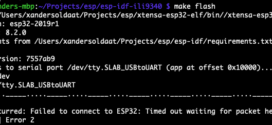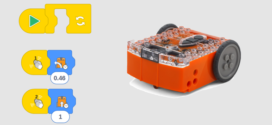 There are many books out there for the budding robotics fan who wants to hone his or her programming skills. This is a book that fills that need very nicely. Terry Griffin’s “The Art of LEGO MINDSTORMS EV3 Programming” is a great No Starch Press publication. While some books focus on building, others and both building and programming, this one has deep focus on programming, not surprisingly so, considering Terry is a software engineer by trade! It features a single robot, which is modified slightly where necessary. This book is usable for people with both the Retail and Education versions of the EV3 set.
There are many books out there for the budding robotics fan who wants to hone his or her programming skills. This is a book that fills that need very nicely. Terry Griffin’s “The Art of LEGO MINDSTORMS EV3 Programming” is a great No Starch Press publication. While some books focus on building, others and both building and programming, this one has deep focus on programming, not surprisingly so, considering Terry is a software engineer by trade! It features a single robot, which is modified slightly where necessary. This book is usable for people with both the Retail and Education versions of the EV3 set.
It starts with a general introduction and moves to a detailed description of the various graphical programming environment features. The book has detailed and clear building instructions for both the Retail and Education version of the main robot. It shouldn’t take too much effort to build it, even for the inexperienced builder.
After introducing the reader to sensors and motors using small programs that show off their functionality and how to use them effectively, it moves onto program flow. Here, concepts such as switch/case and loop are explained. In the next chapter, all this knowledge is put together to create a wall following robot.
As the book progresses, things like data wires, my blocks, variables and other things are explained, so by the end there won’t be much left unexplained.
My impression of this book is that it would serve very well as a book for teenagers (15+) and adults who want to learn how to program their robot but don’t care that much about learning how to build lots of different creations. There are plenty of challenges in the book that will have you apply your newly learned knowledge in ways that you may not have thought of before. If you’re looking for a book that will be suitable for kids from the age of, say, 10+, this book may not be for you. It’s a great book for learning to program, as the title implies, but if you want instructions for building weird and wonderful models, then perhaps another one of No Starch’s MINDSTORMS books would be more suitable.
 Bot Bench I'd Rather Be Building Robots
Bot Bench I'd Rather Be Building Robots



